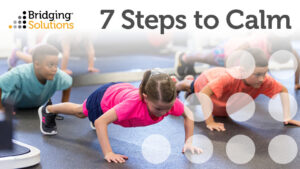Struggling with a Child’s Behavior?
The Link between Micromovements and Behaviors
Behavioral Reactions: Even-tempered? Anxious? Quick-tempered?
Your child’s temperament should be able to shift up and down to meet the changing situations of their days and weeks. Their reactions should rise to meet the occasion and then calm back down. This is known as modulation.
Stress happens when a child’s behavior ramps up like a rocket or gets stuck in high alert. Both of these are examples of poor modulation.
How Does Modulation Naturally Develop?
From birth forward our behaviors evolve. Most fundamentally behavior supports survival needs, progressing to social/emotional needs. We learn to get attention and then to self-calm. We learn to socialize and then to rest. As we grow and mature, these basic modulation skills grow in complexity.
How do Micromovements Relate to Modulation?
What you may not realize is how vital the physical function of the diaphragm muscle is to modulation and self-calming.
The diaphragm muscle movement impacts behavior and the autonomic nervous system function in several ways.
- The ‘rest-digest’ cycle is physically supported by the rhythmic diaphragm movement.
- Self-calming is enabled by deep diaphragmatic breathing.
- Core stability is essential for postural control and movement transitions, as the diaphragm literally links the upper and lower body together.
Micromovements of the body’s core support proper diaphragm function. When behavior modulation is challenging in children, we find micromovements aren’t working well either.
When micromovement modulation improves, so does behavior modulation.
What are micromovements?
Read the recent blog post about micromovements here.
Why do Self-Calming Micromovements Get Off Track?
 Over the years, we have found there are four reasons the calming micromovements in the body’s core can be impacted, especially in children. (Good news is they can change!)
Over the years, we have found there are four reasons the calming micromovements in the body’s core can be impacted, especially in children. (Good news is they can change!)
- Prenatal stress: The diaphragm interconnections may be impacted by maternal health stress or asymmetric positioning related to being breech or a twin.
- Birth stress: Labor — long, fast or slow — can impact the functional transition from processing fluid to air. C-sections and premature births often have unique ways of crimping diaphragm function.
- Medical procedures: Common corrective pediatric surgeries create trauma to a developing diaphragm. This is a functional, not visible stress. A lumbar puncture, common with high fevers, will often impact diaphragm function too.
- Injuries/Traumas: Falls and freak accidents upset diaphragm function in many ways. The muscle interconnects the body in so many ways that is can be thrown off center which limits function.
How can Bridging Help?
 One of the primary principles in the Bridging® Technique is to analyze a set of passive movements where we do the moving, not you.
One of the primary principles in the Bridging® Technique is to analyze a set of passive movements where we do the moving, not you.
These movements tell the story of how your body is able to self-calm and modulate. The movements also weave a story of how early life events likely impacted the ability of the diaphragm to fully supporting calming and self-control.
The gentle Bridging movements we use act to restore the underlying developmental glitches allowing the diaphragm to work better.
Better micromovements yield better behavior!
Our goal at The Bridging Institute remains keeping your body’s micromovements optimally organized to self-regulate, focus and be active for the things you enjoy in life.
Coming Soon: A New Option for Bridging
Bridging Solutions

For parents, our first online program, 7 Steps to Calm, is set to debut in March.
This is our first on-demand program, with more to come, featuring a guided structure of movements for you to do at home to help your little ones.

